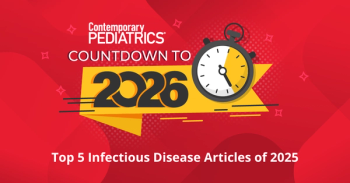
J&J submits icotrokinra NDA for plaque psoriasis in patients 12 years or older
J&J is seeking the first approval for the investigational targeted oral peptide to treat patients 12 years or older with moderate to severe plaque psoriasis.
A new drug application has been filed with the FDA by Johnson & Johnson (J&J) for its investigational targeted oral peptide icotrokinra to treat adults and pediatric patients 12 years or older with moderate to severe plaque psoriasis (PsO), according to a press release from the company.1
If approved, this indication would be the first for the peptide that selectively blocks the IL-23 receptor, underpinning inflammatory response in plaque PsO and offering potential in other IL-23–mediated diseases, according to J&J.
Application submission was based on data from 4 phase 3 studies conducted in the ICONIC clinical development program, including ICONIC-LEAD (NCT06095115), ICONIC-TOTAL (NCT06095102), ICONIC-ADVANCE 1 (NCT06143878), and ICONIC-ADVANCE 2 (NCT06220604).
Phase 3 ICONIC-LEAD study
Data from the phase 3 ICONIC-LEAD study, presented at the 2025 American Academy of Dermatology Annual Meeting, demonstrated that once-daily icotrokinra significantly improved skin clearance in adolescents (≥ 12 years) and adults with moderate to severe plaque PsO. At week 16, 65% of patients receiving icotrokinra achieved an Investigator Global Assessment (IGA) score of 0/1 (clear or almost clear) and 50% achieved a 90% reduction in Psoriasis Area and Severity Index (PASI) score compared with 8% and 4% of placebo recipients, respectively (P < .001 for both end points).2
Efficacy continued through week 24, with 74% of patients achieving IGA 0/1 and 65% reaching PASI score of 90 (PASI 90). Complete skin clearance was observed in 46% (IGA 0) and 40% (PASI 100) of treated patients. The overall rate of adverse events was comparable between the icotrokinra and placebo groups (49% each), and no new safety signals were reported.
"People living with moderate to severe plaque psoriasis are seeking options that balance efficacy, safety, and ease of use,” said Robert Bissonnette, MD, chair of Innovaderm Research in Montreal, Quebec, Canada, and ICONIC-LEAD study investigator, at the time of data announcement. "These study results are promising and show the potential for treatment with icotrokinra to offer patients the unique combination of complete skin clearance and a favorable safety profile in a once-daily pill.”
Phase 3 ICONIC-TOTAL study
In a study presented at the 2025 Society for Investigative Dermatology Annual Meeting, once-daily icotrokinra demonstrated significant skin clearance in adults and adolescents with moderate plaque PsO involving high-impact areas and as little as 1% body surface area. At week 16, 57% of patients treated with icotrokinra achieved the study’s primary end point—an IGA score of 0/1 with at least a 2-grade improvement from baseline—compared with 6% of those receiving placebo (P < .001).3
Icotrokinra also demonstrated clinical benefit across specific anatomical regions. At week 16, 66% of patients with scalp involvement achieved a scalp-specific IGA score of 0/1 vs 11% on placebo (P < .001). Among patients with genital PsO, 77% achieved a Static Physician Global Assessment (PGA) of Genitalia score of 0/1 compared with 21% receiving placebo (P < .001).
In a smaller subgroup with hand and/or foot involvement, 42% of icotrokinra-treated patients reached a hand/foot PGA score of 0/1 compared with 26% on placebo.
Phase 3 ICONIC-ADVANCE 1 and ICONIC-ADVANCE 2 studies
Top-line results from the phase 3 ICONIC-ADVANCE 1 and 2 studies demonstrated that once-daily icotrokinra met its coprimary end points of achieving an IGA score of 0/1 and a 90% reduction in PASI at week 16 compared with placebo. The studies enrolled patients with moderate to severe plaque PsO and further reinforced the efficacy profile observed in earlier trials.1,4
In addition to meeting the primary efficacy end points, icotrokinra achieved all key secondary end points at weeks 16 and 24, demonstrating superiority over deucravacitinib. These findings support the potential of icotrokinra as an effective treatment option for patients with moderate to severe plaque psoriasis.
“The rapid patient enrollment across our ICONIC clinical program underscores the unmet need for an advanced plaque psoriasis treatment that meaningfully addresses their needs and preferences,” said Liza O’Dowd, MD, vice president and immunodermatology and respiratory disease area lead at Johnson & Johnson Innovative Medicine. “Given the breadth and depth of our studies along with the robust clinical results reported to date, we are confident that icotrokinra has the potential to transform how physicians and patients think about plaque psoriasis care, establishing a new standard in the treatment of this immune-mediated disease.”1
References
- Johnson & Johnson seeks first icotrokinra U.S. FDA approval aiming to revolutionize treatment paradigm for adults and adolescents with plaque psoriasis. Press release. Johnson & Johnson. July 21, 2025. Accessed July 21, 2025. https://www.jnj.com/media-center/press-releases/johnson-johnson-seeks-first-icotrokinra-u-s-fda-approval-aiming-to-revolutionize-treatment-paradigm-for-adults-and-adolescents-with-plaque-psoriasis
- Icotrokinra results show potential to set a new standard of treatment in plaque psoriasis. Press release. Johnson & Johnson. March 8, 2025. Accessed July 21, 2025. https://www.jnj.com/media-center/press-releases/icotrokinra-results-show-potential-to-set-a-new-standard-of-treatment-in-plaque-psoriasis
- Icotrokinra results show significant skin clearance in patients with difficult-to-treat scalp and genital psoriasis. Press release. Johnson & Johnson. May 9, 2025. Accessed July 21, 2025. https://www.jnj.com/media-center/press-releases/icotrokinra-results-show-significant-skin-clearance-in-patients-with-difficult-to-treat-scalp-and-genital-psoriasis
- Icotrokinra results show potential to set a new standard of treatment in plaque psoriasis. Press release. Johnson & Johnson. March 8, 2025. Accessed July 21, 2025. https://www.jnj.com/media-center/press-releases/icotrokinra-results-show-potential-to-set-a-new-standard-of-treatment-in-plaque-psoriasis
Newsletter
Access practical, evidence-based guidance to support better care for our youngest patients. Join our email list for the latest clinical updates.




